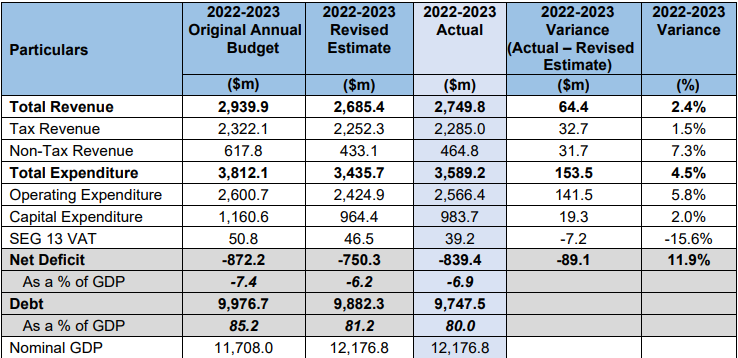
Fiji’s debt levels stood at $9.75 billion, equivalent to 80 percent of GDP at the end of July 2023, a major reduction from around 89 percent a year ago and based on current projections, debt ratio is expected to further decline to around 78 percent by the end of this financial year.
Permanent Secretary for Finance, Shiri Gounder says with the strong recovery in the Fijian economy, supported by a strong rebound in tourism, remittances and overall consumption, and a relatively lower fiscal deficit, Government debt to GDP ratio has significantly declined from around 89 percent to 80 percent at the end of last fiscal year.
He says this is lower than the revised estimated debt target of 81.2 percent of GDP and the original budgeted debt target of 85.2 percent.
Gounder says the debt to GDP ratio fell by 8.8 percent when compared to the debt to GDP ratio of 88.8 percent at the end of July 2022.
He says this reduction in the debt ratio was driven by a strong rebound in the domestic economy and a relatively lower net deficit during the fiscal year.
The Permanent Secretary says domestic debt stood at $6.170.5 billion or 50.7 percent of GDP while external debt was $3.577 billion or 29.4 percent of GDP.
He says in terms of the debt mix, domestic debt accounts for around 63.3 percent of total Government debt, while 36.7 percent is external debt.
Gounder says Fiji is on a path of fiscal consolidation to rebuild its fiscal buffers after the pandemic-induced stress on public finances.
He says debt to GDP ratio is projected to decline further as Government embarked on major revenue generating tax reforms which subsequently resulted in a relatively lower fiscal deficit for 2023-2024 financial year.
He says the current growth momentum in the domestic economy will further complement these efforts towards fiscal consolidation and debt sustainability,however, the risks emanating from global economic developments, geo-political tensions, rising fuel prices, massive skill loss due to outward migration, capacity constraints in the tourism industry and our vulnerability to national disasters continue to prevail and has to be monitored and mitigated.

Stay tuned for the latest news on our radio stations

